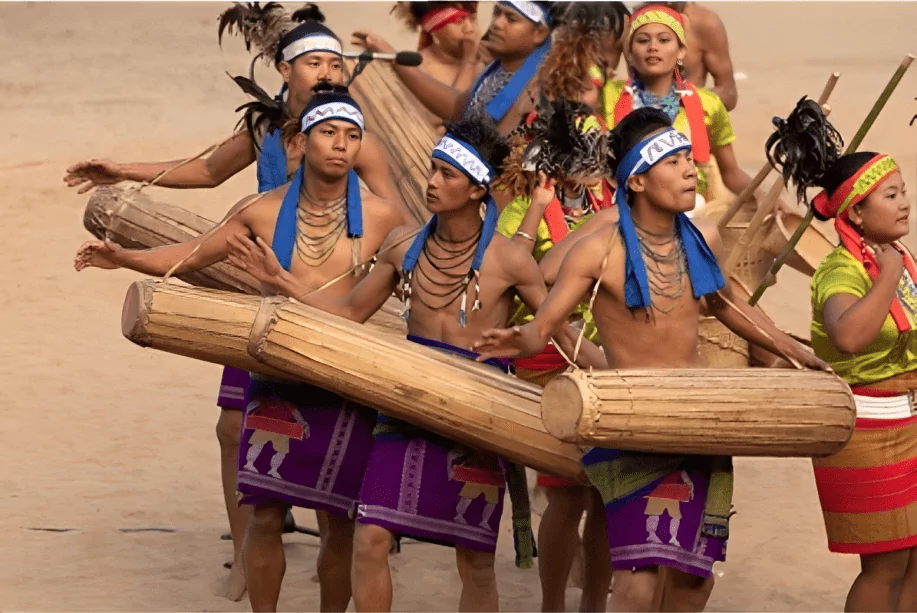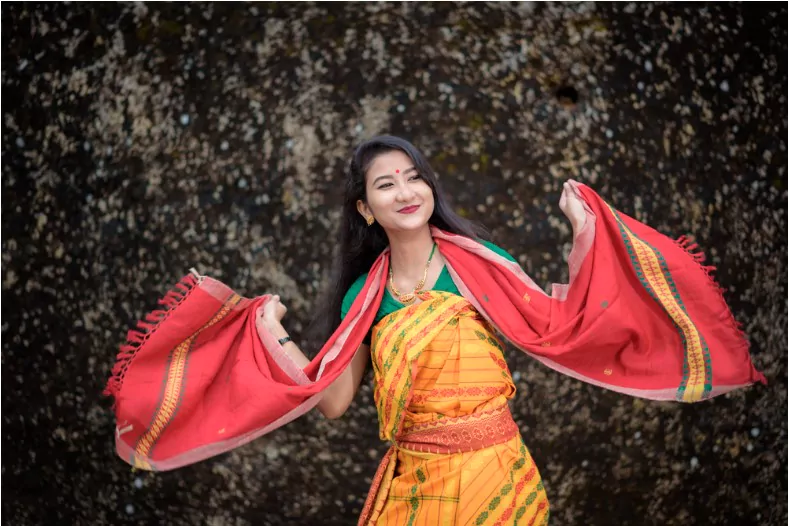A Glimpse into the North Eastern Tribes of India

India, often described as a ‘melting pot of cultures,’ proudly manifests a deep-seated symbiosis of varying customs, traditions, and heritage. Among the diverse cultures, the north-eastern tribes of India hold a unique, intriguing, and rich ethnic character, which remains relatively unexplored by the world at large. This blog will delve into the richness, cultural heritage, and diversity of the north eastern tribes in India, which sets them apart in this country of myriad colours.
- The Uncharted Wilderness: North-Eastern Tribes of India
- A Glimpse into the Varied Tribal Communities
- Cultural Potpourri: A Blend of Tradition, Art, and Festivals
- Traditional Art Forms and Crafts
- Sustainable Living: Harmony with Nature
- Language Diversity
- Challenges Faced by the North-Eastern Tribes
- Wrapping Up
1 The Uncharted Wilderness: North-Eastern Tribes of India
The north-eastern region of India, encompassing eight beautiful states, is home to approximately 220 ethnic groups and nearly 220 languages. These north-eastern tribes showcase an extraordinary array of cultures, traditions, lifestyles, and social practices, with each tribe being distinct from the others. This region, with its undulating hills, lush valleys, teeming wildlife, and vibrant cultures, forms an integral part of the Indian subcontinent’s rich cultural mosaic.
2 A Glimpse into the Varied Tribal Communities
Let’s delve into the diverse culture and traditions of a few significant north-eastern tribes in India.
The Apatanis of Arunachal Pradesh

Known for their sustainable farming methods, the Apatanis are one of the many north-eastern tribes inhabiting the valleys of Arunachal Pradesh. The distinct feature of older Apatani women includes facial tattoos and nose plugs (yaping hullo), a tradition that’s no longer practised.
The Khasis of Meghalaya

Belonging to the Khasi-Jaintia group, the Khasis are the largest tribe in Meghalaya. They follow a unique matrilineal system where the lineage and inheritance pass through the female line.
The Nagas of Nagaland

Nagaland, known as the ‘Land of Festivals,’ houses several tribes, the Nagas being the most well-known. Each Naga tribe is unique in terms of customs, languages, and attire. The Hornbill Festival, a celebration of all 16 tribes of Nagaland, beautifully encapsulates their vibrant cultures.
The Bodos of Assam

Bodos, one of the oldest tribes in Assam, are known for their colourful Bodo weave. They follow Bathouism, with ‘Sibrai’ (Lord Shiva) as their chief deity. The Bodo language, written in Devanagari script, adds richness to the linguistic diversity of north-eastern tribes.
3 Cultural Potpourri: A Blend of Tradition, Art, and Festivals
The north-eastern tribes are a repository of ancient traditions, crafts, folk arts, music, and dance. This cultural richness is displayed during their vibrant festivals that bring the whole community together.
The tribes, including the Apatanis, Khasis, Nagas, Bodos, and several others, celebrate their distinct festivals with much gusto. These include the ‘Dree Festival’ of Apatanis, ‘Nongkrem Dance Festival’ of Khasis, ‘Hornbill Festival’ of Nagas, and ‘Bwisagu’ of Bodos. The festivals, filled with traditional music and dance, are visual treats representing the diverse cultural landscape of the north-eastern tribes.
4 Traditional Art Forms and Crafts
The north-eastern tribes are renowned for their indigenous art forms and crafts. Naga shawls, Assam silk, bamboo and cane crafts, and traditional jewellery made by the tribes are admired worldwide. Muga silk of Assam and traditional Ao Naga shawls represent the fine craftsmanship of the tribes.
5 Sustainable Living: Harmony with Nature
The north-eastern tribes have long held a symbiotic relationship with their surrounding environment. They embody sustainable living practices, as evident in the Apatani’s agriculture system, which combines rice farming and fish cultivation. Their traditional practices are a testament to their respect and reverence for nature.
6 Language Diversity
One of the unique aspects of the north-eastern tribes is their linguistic diversity. Each tribe communicates in its dialect, contributing to the linguistic richness of India. Some of the common languages spoken by them include Bodo, Garo, Ao, Lotha, Angami, and Khasi.
7 Challenges Faced by the North-Eastern Tribes
Despite their cultural richness and diversity, the north-eastern tribes face numerous challenges. These range from social issues like identity crises, assimilation pressures, and linguistic extinction, to economic issues like unemployment, poverty, and inadequate infrastructure. Their sustainable living practices, traditional knowledge, and crafts are also under threat due to rapid modernization and globalisation.
In conclusion, the north-eastern tribes of India embody the country’s rich cultural heritage and diversity. Their traditions, festivals, art forms, sustainable living practices, and languages offer us invaluable insights into an ancient, living, and evolving culture. While acknowledging and appreciating their cultural richness, it is crucial to address their socio-economic challenges and strive to preserve their unique tribal heritage.
With efforts from the government and local communities, it is hoped that the heritage, culture, and traditions of the north-eastern tribes will continue to flourish, enriching India’s cultural tapestry. In the age of rapid globalisation, the cultural wisdom of the north-eastern tribes offers invaluable lessons on sustainability, community living, and harmony with nature that the world needs to learn.
8 Wrapping Up
The north-eastern tribes of India, indeed, represent a beautiful blend of tradition, culture, and simplicity. Their richness, resilience, and reverence for nature are truly inspiring, offering an enchanting glimpse into India’s diversity and cultural splendour.
Embracing the beauty and diversity of the north-eastern tribes is not just about acknowledging India’s cultural richness. It also presents an opportunity to learn, grow, and evolve as a society that respects and celebrates its diverse cultural heritage. For every individual who seeks to understand India’s soul, a journey into the heart of the north-eastern tribes is an experience that enriches and enlightens.
So, the next time you think of India, remember to look beyond the clichéd narratives and delve into the intriguing world of the northeastern tribes. Their unique cultures, rich traditions, and colourful festivals are the threads that weave the beautiful tapestry of the Indian cultural heritage. Explore, celebrate, and treasure them!
Community Q&A
About This Article
This article has been viewed 385 times.



